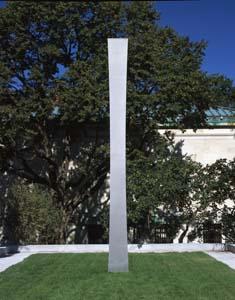Catch up with the first instalment of Louise Nicholson’s cultural road-trip, taking in Chicago’s top museums, here.
Driving east out of Chicago around the tip of Lake Michigan, the freeway abandons the forest of skyscrapers – with its undergrowth of museums and jazz clubs – to join Interstate 90. This is the country’s longest highway: 3,020 miles from Seattle to Boston. The 250-mile section to Toledo rolls out across the Great Plains, from Illinois state into Indiana and then Ohio, without incident. This is flat prairie land; it would have been the kind of open view enjoyed by Frank Lloyd Wright from his newly built home in Chicago’s now leafy Oak Park inner suburb.
The arrival into Toledo from the I-90 is, frankly, not promising – a tangle of highways leaping over forgotten industrial plots. Founded in 1837 as a port, the city’s position, first beside Lake Erie and the Erie Canal and then the New York-Chicago railway line, slowly brought huge wealth as a result of the manufacturing industry (the largest employer for much of the 20th century was Jeep, for example). This dependence on manufacturing meant Toledo was hit hard by the Great Depression of the 1930s; it rebounded only to slump again in the 1980s.
Yet the Toledo built by its city-proud businessmen is rising once again. In the downtown area amid new skyscrapers, beside the Maumee River, the restored Secor Building houses River House Arts. Restaurants and bars are multiplying around residential lofts in the Warehouse district. A stroll through the still elegant 1,000-acre Old West End district – the country’s largest neighbourhood of Victorian, Edwardian and Arts and Crafts houses east of the Mississippi – evokes its former status as the best address for the city’s businessmen and patrons, before they moved off to the suburbs. Linking these and other districts is the dynamic Metroparks project of urban paths and parks. Education, health care, and solar energy are the rising industries, while the long-established glass industry continues to thrive. It is through this that the city gets its nickname: Glass City.
Skippin Gherkin (2007), Tom Moore. © Tom Moore. Included in ‘Hot Spot: Contemporary Glass From Private Collections’ at the Toledo Museum of Art until 18 September

It was the glass that brought me to Toledo. Specifically, the Glass Pavilion (2006) – the newest of six buildings on the 36-acre campus of the Toledo Museum of Art, founded in 1901 on land given by glassmaking pioneer Edward Drummond Libbey. Inside, Tokyo-based SANAA architects’ low-lying building of curved glass walls – which helped the practice win the 2010 Pritzker architecture award – the cream of the museum’s 5,000-piece glass collection is displayed amid parkland backdrops. Galleries housing contemporary pieces by American glassmakers such as Jeremy Lepisto, Therman Statom, Tom Moore, and Emily Brock contribute to the current exhibition of private collection loans (until 19 September). The galleries then lead back through a timeline via medieval Mamluk survivors, such as Shaykhu’s Mosque Lamp (1349–55) made in Cairo, to a row of ingenious little camel-shaped ‘cage’ flasks (5–8th centuries) made in Syria and given by E.D. Libbey in 1923. The jam-packed open storage room requires days to appreciate fully.
Untitled (1993), Ellsworth Kelly. Toledo Museum of Art Sculpture Garden

It was a Thursday late opening, and locals thronged the galleries and watched demonstrations of glass-blowing. Walking across the sculpture garden, where time prevented no more than a nod to Frank Gehry’s Center for the Visual Arts (1992), which houses the University of Toledo’s Department of Art and the Museum’s Reference Library, I find Ellsworth Kelly’s steel shaft ‘Untitled’ (1993), a response to the main museum’s columned facade.
As the evening lengthened, the long, low, elegant neoclassical façade of Edward B. Green and Harry W. Wachter’s 1912 building kept its doors open. This, and its extensions, hold the museum’s main collection. As jazz musicians’ songs wafted through the suites of galleries, a frustratingly quick trot through them gave glimpses of familiar paintings. I was brought to a standstill before Rubens’s The Crowning of St Catherine (1631), David’s intriguing smaller version of the Louvre’s Oath of the Horatii (1786) and Hockney’s A Bigger Card Players (2015).
Crowning of St Catherine (1631), Peter Paul Rubens. Toledo Museum of Art

Next stop: Cleveland


